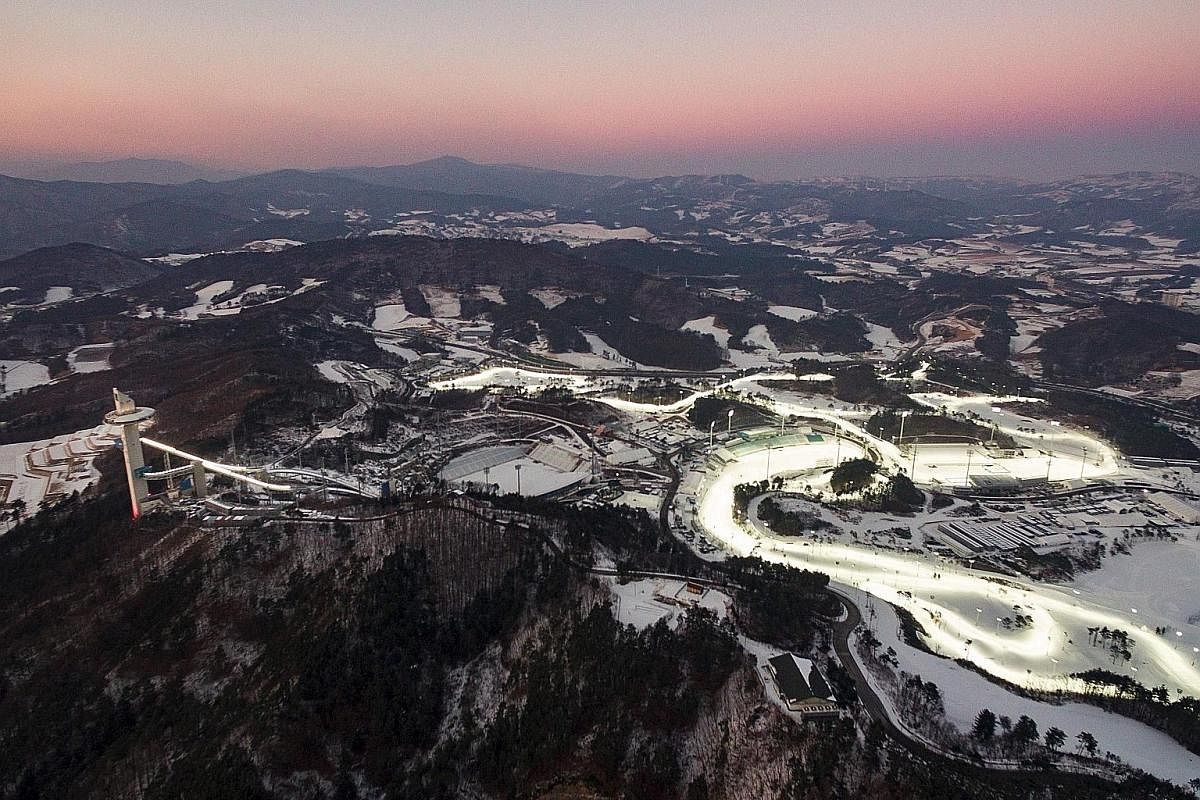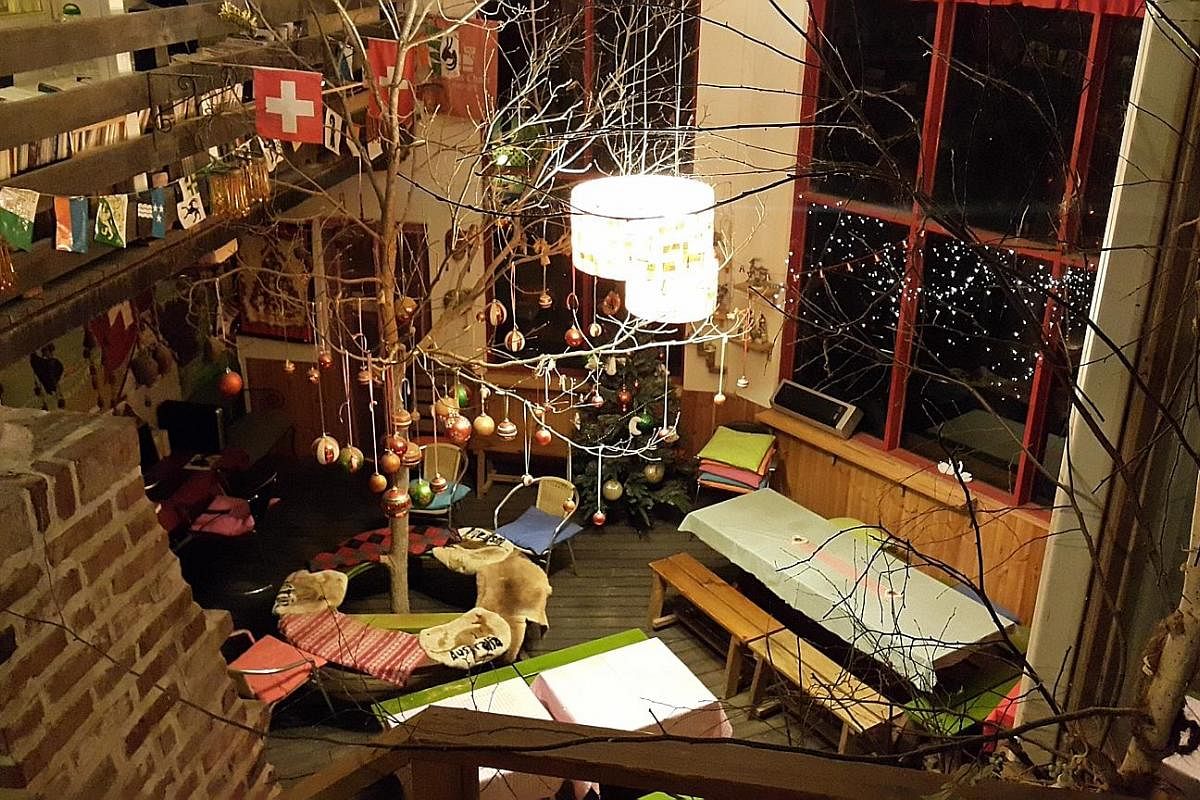-
GETTING THERE
-
Singapore Airlines, Korean Air and Asiana Airlines offer direct flights to South Korea. However, note that Korean Air has moved to the newly opened second terminal at Incheon International Airport, which is a 20-minute shuttle bus ride from the first terminal.
From Incheon airport, visitors can take a high-speed rail on the newly launched Gyeonggang Line to Jinbu station in Pyeongchang. The direct KTX train will take two hours and 15 minutes. But, as it does not run every hour, check the train schedule before you travel.
Travelling within Pyeongchang is best done by car. However, most major car rental companies do not have offices within Pyeongchang, so most tourists travel via KTX train to the nearby Gangneung station and pick up their car from the coastal city.
If you are visiting this month, you can take a free shuttle bus from Jinbu station to tour sites including Samyang ranch and Woljeongsa temple.
Winter wonderlands
Picturesque Pyeongchang
Here are seven must-do activities in the South Korean alpine town hosting this year's Winter Olympics






South Korea's most popular alpine town, Pyeongchang, will be opening its ski slopes to international athletes - drawing even competitors from North Korea - arriving for the Winter Olympics from Feb 9 to 25.
Located in the mountainous province of Gangwon in the north-east, Pyeongchang - not to be confused with North Korean capital Pyongyang - is known among locals for its meandering peaks and pristine ski slopes. Most well-known among its ski locations is Yongpyong, South Korea's oldest ski resort, made famous by hit South Korean dramas Winter Sonata (2002) and Goblin (2016 to 2017).
The laidback county, with a population of about 43,000 people, is also home to one of the country's largest sheep farms, buckwheat flower fields and premium hanwoo (Korean beef).
Gangwon representatives hope the Pyeongchang Olympics will boost tourism. About 83,000 foreign tourists and 75,000 athletes, officials and media are expected to visit the province for the Olympics alone.
The Sunday Times recommends seven must-do activities in this picturesque destination.
1 Enjoy the Korean alps
With mountains accounting for more than 80 per cent of the province's land area, it is no wonder Pyeongchang is coined the "Alps of Korea".
The county is an ideal getaway for city folks yearning for a breather, given its average altitude of about 700m above sea level, bountiful snowfall in the winter and cool temperatures in the summer.
During a visit last December, where we stayed at Yongpyong ski resort (www.yongpyong.co.kr/eng/index.do), we were greeted by a temperature of minus 2 deg C and blankets of powdery white that turned my mum into an excited teenager squealing: "It's real snow... real snow!"
My eight-year-old daughter, meanwhile, was determined to make the best of the slopes, zooming down in a snow sled over and over again.
To get to the resort, we took a three-hour bus ride from Seoul. The beauty of the alps can be enjoyed by hiking enthusiasts year-round. Blooming pink and yellow flowers blanket the mountains in spring, while autumn brings beautiful golden hues.
2 Stay in a Swiss-inspired K-chalet
Lodging options are aplenty in Pyeongchang, with its three main ski resorts - Alpensia, Yongpyong and Phoenix Park - offering both Western-style hotels and condominium apartments.
But I prefer to stay in pensions, cosy wooden chalets with slate roofs. These Swiss-inspired houses are often built and run by their South Korean owners, who typically go out of their way to make visitors feel at home - from making a Western breakfast of toast and eggs for guests to offering useful travel tips.
I spent two memorable nights last autumn at a pension called Pyeongchang Four Seasons House - unaffiliated to the well-known Four Seasons hotel chain. It was beautifully decorated with Swiss and German memorabilia, making it the closest thing to the European alps here. I paid $200 a night for a duplex room for four last September.
3 Pick top-grade Korean beef to barbecue
Pyeongchang produces one of the country's highest grades of premium hanwoo, or Korean beef.
While there is no lack of barbecue restaurants here, barbecue restaurant Daegwallyeong Hanwoo Town (isj-hanwoo.com) stands out for allowing customers to choose their own cuts from chillers in a supermarket-like space on the first floor. Diners pay for their items, then take their food upstairs for barbecuing.
The kimchi and salad side dishes are kept simple so there is no distraction from the star of the meal - the juicy and tender beef that melts in your mouth.
4 Chase sheep on rolling hills
Scenes from The Sound Of Music flashed before my eyes as I stepped onto the rolling meadows and clear blue skies of Daegwallyeong Skyranch - on the highlands of the Taebaek mountains 180km east of Seoul - in late summer.
My mother, sister, daughter and I paid 5,000 won (S$6) each to ride a tractor to the peak from the foot of the hill. When we arrived 15 minutes later, we saw a row of towering white windmills spinning gently in the strong winds.
Then came the fun part - feeding and chasing sheep on the hill (and sometimes being chased in return).
We spent a good two hours here, but hardly felt the time pass.
5 Roll in buckwheat flower fields
If you are visiting Pyeongchang in autumn, be sure to make a stop at Bongpyeong village to see its endless buckwheat flower fields.
The beautiful sight of tiny white flowers glistening in the sun is captured in a 1936 romantic novel by the late novelist Lee Hyo Seok, whose works are on display in a cultural hall in the village.
Foodies must try the wide variety of buckwheat dishes Pyeongchang is famous for - from buckwheat noodles to pancakes to steamed buns and more.
These foods can be found at the Bongpyeong Market, which is open every second, seventh, 12th, 17th, 22nd and 27th day of the month.
6 Relive K-dramas at film sites
Pyeongchang's beautiful winterscape was featured prominently in two hit South Korean dramas - the 2002 classic Winter Sonata and the more recent Goblin (2016 to 2017).
Yongpyong, the first ski resort to open in South Korea in 1975, is a must-go for fans of both dramas.
Standees of the dramas' leading couples (such as Goblin's Gong Yoo, above) have been placed at major film sites - including inside a cable car cabin - for fans to take selfies with.
But if you are heading there during the Winter Olympics, note that the gondola ride to the famous Dragon Peak has been closed and will reopen only after the Olympics.
7 Enjoy a spa, sauna and water theme park all rolled into one
Most major ski resorts such as Alpensia (bit.ly/2fL1mA9) and Yongpyong have their own water theme parks and for good reason.
They offer not only wave pools and water slides, but also jimjilbang (sauna) and spa services to soothe body aches after a long and strenuous day of winter sports.
Just be prepared to get naked like everyone else in the changing rooms, bath houses and hotspring zones. Most resorts do provide T-shirts and shorts for the jimjilbang section that is popular with the locals, so you can chill there with peace of mind.
A weekend day pass at Alpensia's Ocean 700 water park is tagged at 57,000 won (S$69) an adult, while Yongpyong's Peak Island water park charges 60,000 won for an adult ticket during peak season.
Join ST's Telegram channel and get the latest breaking news delivered to you.
A version of this article appeared in the print edition of The Sunday Times on February 04, 2018, with the headline Picturesque Pyeongchang. Subscribe


